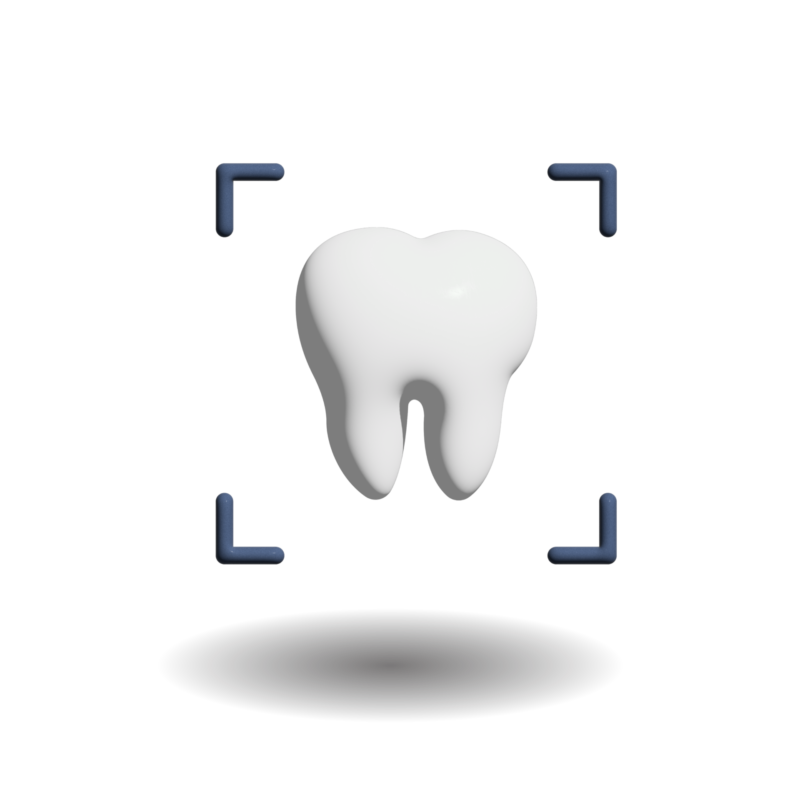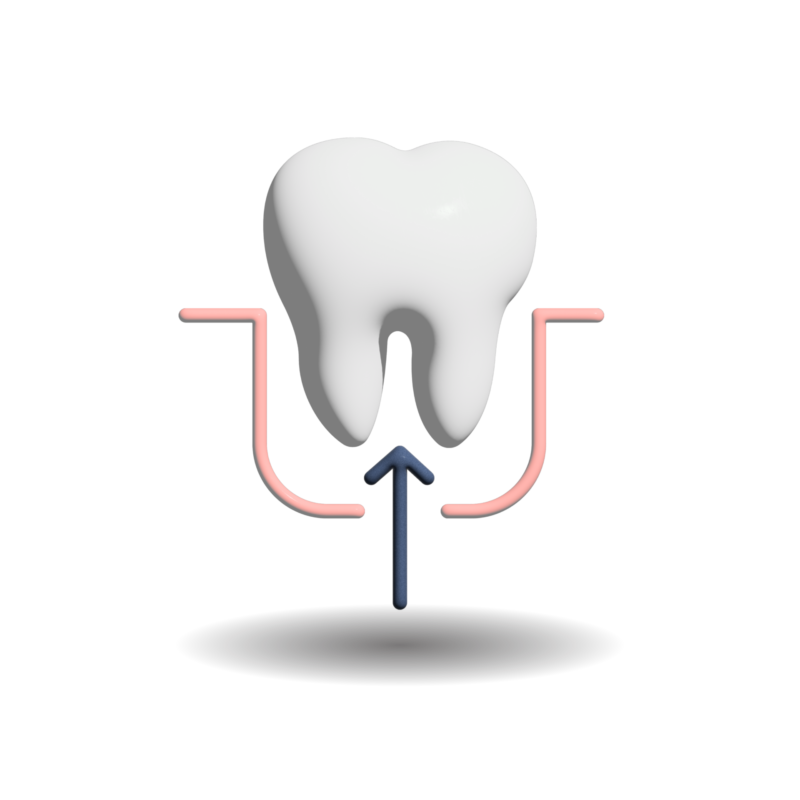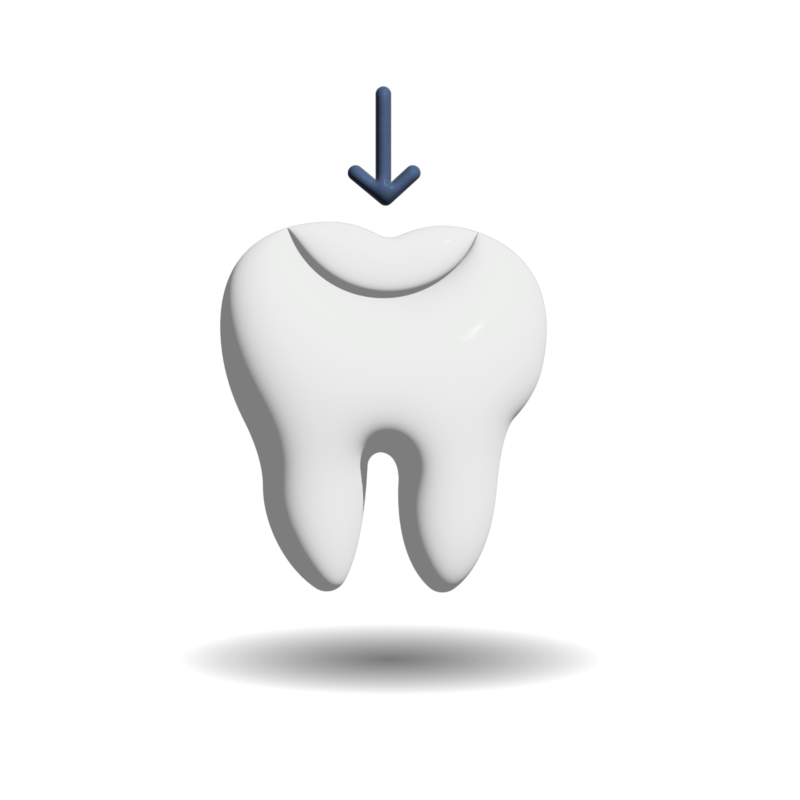Root Canal
Over a million root canal treatments—endodontic therapy—are performed every year in the UK. Root canal treatment treats infection that affect the centre of a tooth called ‘pulp’. Pulp extends down the roots in the form of slender canals—called ‘root canals’, hence the name. Genix dentists employ modern technology to make this treatment as pain-free as possible, saving teeth that might otherwise need to be removed due to severe decay or infection.

Recognised very early on for their importance in draining dental infections that have resulted in an abscess, root canal treatments clear contamination from the innermost chamber of your teeth to give them a new lease of life. Some of the well-established advantages of root canal treatment include:
- Pain relief and alleviation of discomfort caused by infected or inflamed pulp
- Preservation of natural teeth avoiding the need for extractions.
- Prevention of infection spread to other teeth or the jawbone
- Improvement in oral health by eliminating sources of infection
While archaeological evidence goes as far back as Roman era, the first ‘modern’ root canal was carried out in 1838, making this an established treatment modality to treat dental infections. Sometimes, there is little need to reinvent the wheel, and that reflects in the broad steps used in root canal treatment. The technology and materials in use have undergone massive advances to make this procedure precise and easy to undergo, while at the same time staying strong with the principles that have stood the test of time.
The process of delivering root canal treatment involves several steps starting with an accurate clinical diagnosis, including the use of x-rays. A small opening is made in the crown of the tooth to access the pulp—under local anaesthesia if necessary. Fine files are then introduced that clean the root canal from within, and using gentle but effective disinfectant solutions, the tooth is washed clear of infection. The tooth is then sealed in its root and crown with appropriate filling materials to prevent reinfection, and covered with a crown if necessary to protect it from high biting forces.
In borderline cases, your dentist may employ pulp-preservation therapies instead of root canal treatment. These include use of materials that promote the pulp to heal and seal itself off from the invading germs. Called ‘direct’ and ‘indirect pulp capping’ procedures, these involve using calcium hydroxide and calcium silicate materials.
Genix dentists make use of multiple advances like the latest nickel-titanium files that flex as per the shape of your root, and the apex locator that accurately gauges the adequacy of cleaning.
Root canal treatments, like all other treatments in dentistry, begin with a detailed check-up to locate the offending tooth. Usually needing at least two appointments after the initial consultation, it may occasionally be possible to complete your root canal treatment in a single visit. Your Genix Dentist will advise you on whether this is suitable. Regardless, your treatment is carried out in a way that is gentlest on your tooth, and delivers the desired results in the quickest possible time-frame.
The workflow for root canal treatments typically has the following steps:
Appointment 1
Clinical history, exam—including vitality tests—and x-rays to diagnose the teeth with issues
↓
Accessing the pulp through the crown under local anaesthesia if necessary
↓
Cleaning the tooth to the best possible extent, followed by placement of medicaments and a dressing if necessary
⤷
Healing period
Appointment 2
Completing the cleaning of the tooth to the tip of its root, verified with an apex locator and x-rays
↓
Root filling, followed by crown filling with biocompatible materials to seal the tooth
↓
Done!
More appointments than two may be required if the infection is extensive. Also, it may be necessary sometime to prescribe antibiotics. Analgesics may be recommended to provide pain relief in the post-operative period.
Your dentist may recommend a crown to protect the tooth and to prolong its life in function if required. You can read more about crowns at Genix here.
Tooth decay—commonly referred to as a ‘cavity’—is the result of germs having a party on your teeth with the sugar you have had, and is the second most common disease after the common cold. Left unchecked, these germs dissolve the tough barriers of enamel and dentine in your teeth to reach the soft beating heart of the tooth: the pulp. Since the pulp is soft, once the germs reach it, they spread very easily and rapidly throughout, including passing down the roots and potentially infecting the area beyond the teeth. Typical symptoms of a tooth that may potentially need root canal treatment include severe throbbing, sharp or shooting pain that lingers—especially on exposure to cold—or spontaneous pain that worsens on lying down at night. Sometimes, it may be difficult to pin-point the tooth that is causing pain, and this in itself is an important sign that indicates that the pulp may be involved.
This scenario quite common owing to the high prevalence of dental decay. As a result, a large number of people require root canal treatment for the following reasons:
- Treating severe, deep tooth decay that has reached the pulp of the tooth, causing infection in the tooth and the tissues beyond the teeth
- Treating cracked or chipped teeth causing damage that exposes the pulp to bacteria
- Managing teeth that have undergone repeated dental procedures leading to pulp damage.
- Managing teeth that need to be intentionally devitalised as part of treatment plan in order to receive a crown or to support a bridge
- Proper care is essential to ensure the longevity of your treated teeth. This includes maintaining good oral hygiene. Brush and floss regularly to prevent further decay.
- Refrain from chewing hard foods that could damage the treated tooth.
- Visit your dentist regularly for check-ups and cleanings.
- If you grind your teeth, use a mouthguard to protect your teeth.
- Root canal treatments are not necessarily painful. Modern techniques and anaesthesia make the procedure relatively pain-free.
- It is important to adhere to your dentist’s advice for care after the procedure, including getting a permanent filling and/or a crown on the root canal treated tooth.
- New decay under crowns of root canal treated teeth will rarely give you pain. This is why it is necessary to monitor root canal treated teeth for symptoms. Report any unusual symptoms, such as swelling or persistent pain, to your dentist immediately.
- The fact that a tooth needed root canal treatment itself means that the tooth had extensive damage. Root canal treatment offers these teeth another chance to serve you. In spite of the best attempts to preserve them, they can eventually fail—more so than healthy teeth. This is a normal consequence of their wear-and-tear and needs to be taken into account when setting expectations from this treatment modality.
Root canal treatments are a vital dental procedure for saving infected teeth and maintaining overall oral health. By understanding the process, benefits, and aftercare, patients can ensure successful outcomes and enjoy the long-term health of their natural teeth. Step into your Genix Practice confident in the knowledge that your Genix Dentists are equipped with the best to handle this delicate procedure.

If you are a new patient you can fill out the form below to enquire.
Existing patients can book online or phone the practice directly.
Both new and existing patients will receive email confirmation if your enquiry.
New patients enquiries are sent through to our team and they will phone you back within 1-2 working days to book your consultation.
Existing patients will receive their booking confirmation from their online booking or phone call.
Visit the practice for your treatment and enjoy your new smile!
JB
JC
AG
IR
ML
AW
JL
SG
CW
Start your smile journey today. Fill out the contact form below and a member of our team will phone you back to book a time that suits you.








